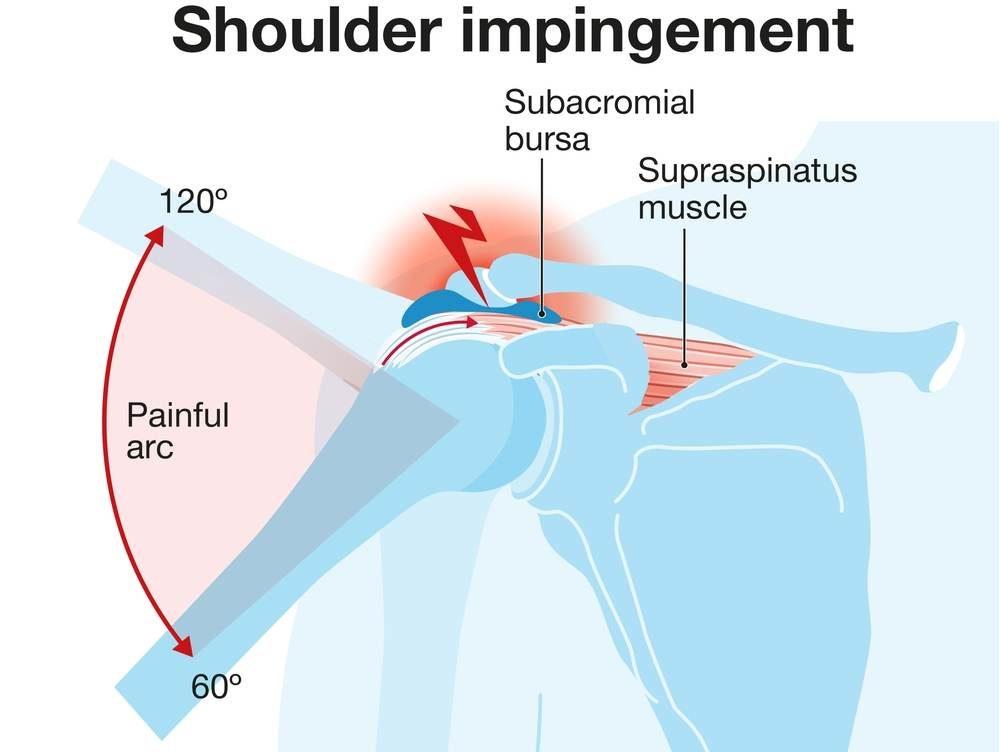Impingement Syndrome

Overview
Impingement syndrome is a frequent cause of shoulder pain, and it occurs when the tendons of the rotator cuff muscles become irritated and inflamed as they pass through the narrow space where the shoulder blade meets the arm bone. This can cause difficulties in performing everyday activities, including reaching overhead, wearing clothes, or even sleeping on the affected side. Often, impingement syndrome is more prevalent in individuals over 40 years old or those who perform heavy lifting or significant overhead work.
Types
Impingement syndrome has two main types:
-
- Primary impingement: Resulting from the abnormal mechanical compression of the rotator cuff tendons due to the structure of the shoulder.
-
- Secondary impingement: Often observed in younger patients, this form is due to instability or abnormal motion of the shoulder joint that causes rubbing or pinching of the rotator cuff tendons.
Causes
Impingement syndrome can be caused by:
-
- Repeated overhead activities such as playing tennis or painting a ceiling, which can cause swelling and inflammation in the tendons.
-
- Structural abnormalities or bone changes like bone spurs in the shoulder joint or thickened tendons.
-
- Age, as tendons wear naturally over time.
-
- Trauma or injury to the shoulder.
Symptoms
There are several symptoms associated with impingement syndrome, such as:
-
- Persistent pain in the shoulder, especially during overhead movement.
-
- Weakness in the shoulder or arm.
-
- Difficulty reaching behind the back.
-
- Trouble sleeping on the affected side.
-
- Loss of range of motion in the shoulder.
Diagnosis
Diagnosis of impingement syndrome typically involves:
-
- A physical examination: where the doctor will examine the shoulder and ask about the symptoms.
-
- Range of motion tests: to determine the extent of joint movement.
-
- Imaging tests: Such as X-rays, MRI, or ultrasound to check for any abnormalities in the shoulder.
Treatment Options
There are various treatment options available for impingement syndrome, which include:
-
- Rest and avoidance of overhead activities.
-
- Physical therapy: Focused exercises can help restore strength and range of motion.
-
- Medication: Non-steroidal anti-inflammatory drugs (NSAIDs) can help reduce inflammation and relieve pain.
-
- Steroid injections: To reduce severe inflammation.
-
- Surgery: In cases where conservative treatments fail, arthroscopic surgery may be needed to create more room for the rotator cuff.
Living With Impingement Syndrome
Living with this condition requires adjustments to reduce inflammation and prevent future flare-ups. Some effective strategies include:
-
- Regular physiotherapy and exercises to strengthen the shoulder muscles.
-
- Modifying activity levels and avoiding overuse of the shoulder.
-
- Using hot or cold therapy to relieve pain and inflammation.
-
- Taking prescribed medication as directed.
When to Seek Help
Immediately seek medical help if you experience:
-
- Persistent shoulder pain that doesn’t improve with rest or medication.
-
- Weakness or numbness in the arm or hand.
-
- Inability to move the shoulder.
-
- Intense pain following an injury or fall.
